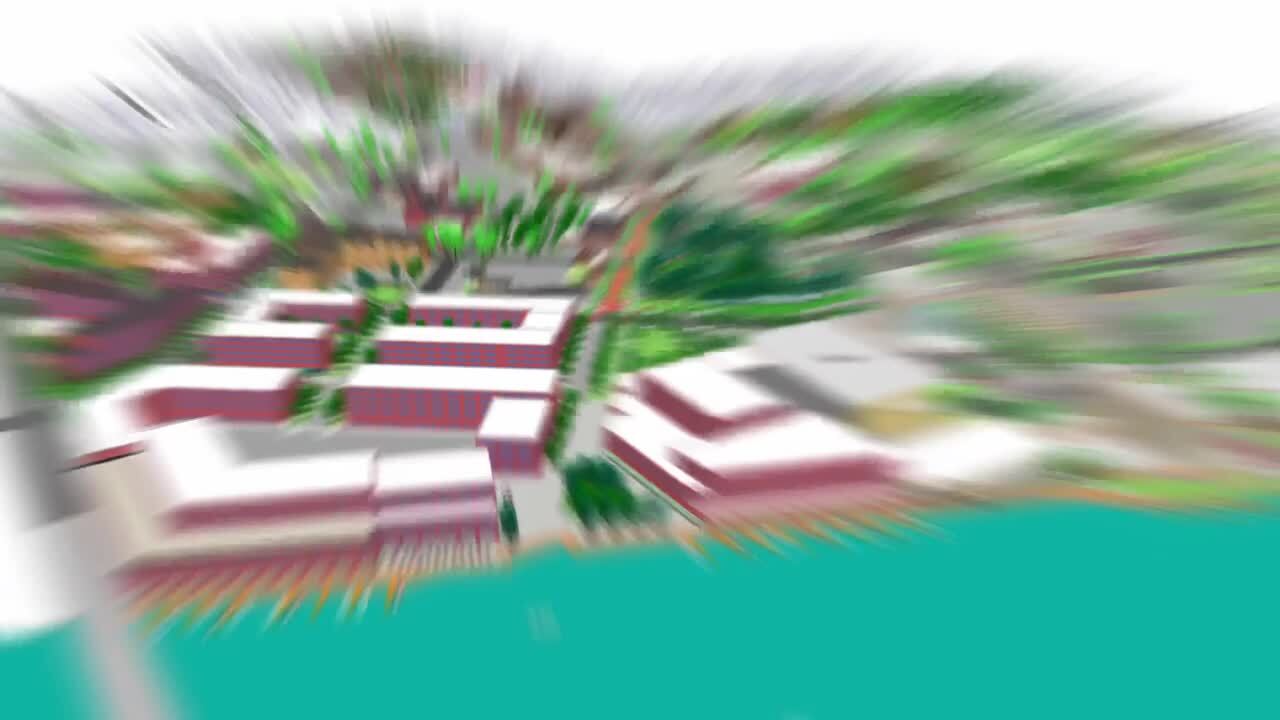SketchUp enables advanced 3D workflows with USD and NVIDIA Omniverse
Trimble joins the Alliance for OpenUSD (AOUSD) and reinforces its commitment to interoperable 3D ecosystems with SketchUp’s newly created USDZ exporter. Learn more about this promise and explore a step-by-step workflow from SketchUp to Omniverse.
We don’t want to hinder your design workflow; we want to supercharge it. As part of the Alliance for OpenUSD (AOUSD), we’re committed to better interoperability between SketchUp and other platforms, like NVIDIA Omniverse™ Cloud, for more advanced visualization. With our new import and export functionality for USDZ, users have a more seamless transition between SketchUp and Omniverse. The new export options are game-changers for designers at Houseal Lavigne, who have, for the first time ever, visualized an entire city modeled in SketchUp within Omniverse. We’ve broken this advanced visualization workflow down for you to try out.
An advanced workflow in action
Creating high-quality visuals is essential for Houseal Lavigne because moving an urban planning project forward involves heavy stakeholder and community buy-in. Devin Lavigne, principal and co-founder of Houseal Lavigne, says, "It's challenging for people to visualize a different picture for an area of town that has always been a particular way. They have to fully understand the new concept visually before embracing the new design.”
Houseal Lavigne has worked extensively with the city of Oshkosh, WI, to create vibrant and economic urban plans. First, Devin and his team developed a plan to reinvigorate the downtown’s waterfront area. After a warm reception of the commissioned plans and financial success for the city, they were hired again to create a much larger plan for the entire city.
The team added to the original waterfront SketchUp model to create one large, holistic model for the city. Houseal Lavigne used SketchUp for their 3D modeling software because it is an intuitive program that helps them visualize their ideas quickly.
SketchUp model of the City of Oshkosh.
To get started on the holistic model, the Houseal Lavigne team imported geographic information about the city into SketchUp. This creates an accurate city model.
“SketchUp allowed us to quickly iterate and advance the concept from space plan diagrams to 3D buildings.”
Devin Lavigne FAICP, Principal and Cofounder of Houseal Lavigne
Once the urban planners had the existing city mapped out, they created a layer in the SketchUp model with the proposed design changes. This allowed stakeholders to toggle between what's currently built and the new proposal, all in SketchUp.
After the design was finalized in SketchUp, the team prepared the model to be exported as a USDZ file. The USDZ file was then imported into Omniverse, where they could develop a hyper-realistic city model. They added realistic foliage and animations like cars driving around the city. It helped bring life-like elements to the proposal.

Scene of the City of Oshkosh model, viewed in SketchUp and Omniverse.
Step-by-step workflow
Houseal Lavigne outlines their complete workflow below.
- Concept planning – Developed a concept plan for the project, including the redevelopment of key parcels, streetscape improvements, and options for parks and plazas.
- 3D modeling – Modeled new buildings, streets, sidewalks, parks, and redevelopment concepts in SketchUp.
- SketchUp component creation – Created a library of low-poly 3D components for vegetation, vehicles, and other entourage elements, ensuring each component has a unique name and definition.
- Place components – Placed components throughout the model in SketchUp.
- USDZ Export – Exported the model as a USDZ file for editing and refinement in the Omniverse App USD Composer.
- Omniverse setup – Initiated a new USD file and added the SketchUp USDZ file as a layer to the Stage, preserving all edits/deltas in the new USD file without altering the original SketchUp USDZ layer.
- Environment – Enhanced the stage with an environment that includes a sun, sky, and the ability to adjust the location and time of day.
- Replace materials and components – Within the USD Composer, SketchUp materials were replaced with high-quality materials, including all texture channels. Also, upgraded low-poly SketchUp components with detailed and realistic models.
- Rendered animations and images – Added cameras to capture views and exported high-resolution images, movies, and animations from the USD Composer.
Transforming the way the world works
We know how important it is for architecture, engineering, and construction professionals to have interoperable software that supports their visualization workflows. Joining AOUSD and developing a more seamless transition from SketchUp to Omniverse is just the beginning. We are committed to fostering 3D ecosystems, so our customers can work, play, and design in a continuous creative flow, both within the vast Trimble technology ecosystem and with all building and construction software.
Learn more about the USDZ exporter and all of SketchUp's new features and upgrades for 2024.
Want to step up your visualization workflow? Sign up for our free trial. If you're ready to purchase, explore our tailored subscription offerings.